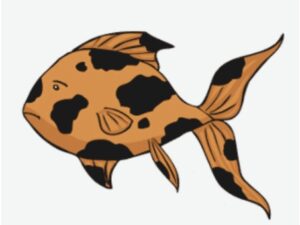The Ember Tetra is a peaceful little fish perfect for the nano aquarium. It is a beautiful little fish with a bright red body and black fins. The Ember Tetra is endemic to the Araguaia River basin of Brazil.
The Ember Tetra is a hardy little fish and can tolerate a wide range of water conditions. They're effortless to care for and make a great addition to an aquarium.
We've heard from many of our readers that they're interested in keeping Ember Tetras, so we wrote this complete care guide to help you.
This guide will discuss everything you need about Ember Tetra care, including diet, tank setup, breeding, and more.
So, without further ado, let's get started!
Table of Contents
- Ember Tetra: Species Summary
- Ember Tetra: Care Guide
- Ember Tetra: Tank Size
- Ember Tetra: Water Parameters
- Filtration
- Heating
- Lighting
- Co2 Systems
- Substrate
- Decoration
- Other Tank Accessories
- Cleaning The Tank
- Cleaning The Filter
- Water Changes
- Ember Tetra: Common Possible Diseases
- Tips For Keeping Your Tetras Healthy
- Ember Tetra: Treatment And Medications Of Diseases
- Ember Tetra: Diet Recommendations
- Ember Tetra: Tank Mates
- Advantages Of Having Ember Tetra In Your Tank
- Disadvantages Of Having Ember Tetra In Your Tank
- Conclusion
Ember Tetra: Species Summary
| Scientific name: | Hyphessobrycon Amandae |
| Common names: | Ember Tetra, Red Ember Tetra |
| Origin: | Araguaia River basin oazil |
| Max size: | Under 1 inch (2 cm approx.) |
| Life expectancy: | Between 2 to 4 years |
| Temperament: | Peaceful |
| Aquarium size: | 10 gallons (37.9 L) |
| pH range: | 5.0-7.0 |
| Temperature range: | 73°-84°F |
| Water Hardness: | 5-17 dGH |
| Water Type: | Freshwater |
| Ease of care: | Easy |
| Nature: | Diurnal |
| Activity level: | Moderate to high |
| Swimming level: | All levels |
| Breeding: | Egg scatterer |
| Diet: | Omnivore, but prefer live and frozen foods |
They are usually found in backwater habitats such as blackwater rivers and tributaries. The water in these habitats is typically stained brown or yellow from tannins and other dissolved organic compounds.
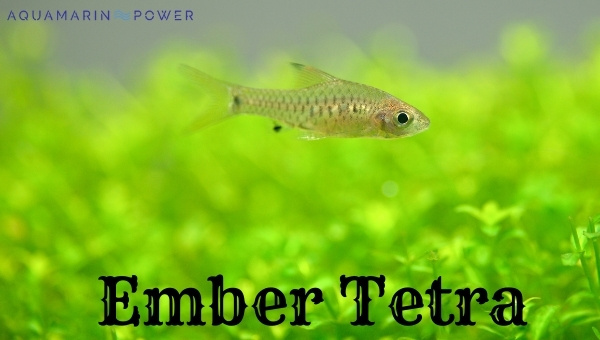
They feed on aufwuchs (algae, plant matter, and small invertebrates) and biofilm in the wild.
Ember Tetra: Size & Growth Rate
The average Ember Tetra size is under 1 inch (2 cm approx.). They typically grow to a maximum size of 1.5 inches (3.8 cm).
They have a moderate growth rate and typically reach their full size in about 6 to 8 months. The size of these fish can vary depending on their environment and diet conditions.
Ember Tetra: Lifespan
The typical Ember Tetra lifespan is 2 to 4 years. However, they have been known to live up to 8 years in captivity.
Maximizing their lifespan is as simple as providing a clean and healthy environment, a balanced diet, and regular water changes.
Ember Tetra: Appearance
The appearance of Ember Tetras can vary depending on their age and sex. Males and females look very similar, but males are more brightly colored than females.
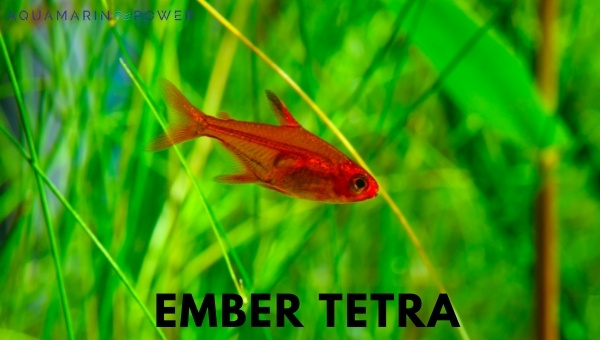
Males typically have a brighter red body color than females. They also have more pointed anal and dorsal fins. Females are typically a darker red and have less pointed anal and dorsal fins.
These fish are beautiful and have bright red bodies with black fins. The base color of their body is typically orange, yellow, or reddish-brown. They have a dark horizontal stripe that runs along their body from their snout to the base of their tail fin. This stripe is usually black but can also be dark brown or green.
Their dorsal fins are tall and falcate (sickle-shaped). They also have a long, sweeping anal fin. Their caudal fins are forked and have a black edge. The very base of the fin is typically orange, yellow, or red. From there, it quickly changes to black.
The ventral and pectoral fins of Ember Tetras are transparent. This clear portion of the fins will often have a pink, red, or yellow tinge.
Their bodies have the classic "comet" shape common in many tetras. So, they are compressed laterally (from side to side) and have a deep body.
Ember Tetra: Behavior & Temperament
Ember Tetras are very active and playful fish. They love to swim around and explore their surroundings.
They are schooling fish, so it's best to keep Ember Tetra in a group of at least 3 to 5 fish. They are very peaceful fish. When choosing an Ember Tetra, it's essential to look for fish that have a healthy appearance and are swimming around actively. Avoid fish hiding in the corner or having any visible signs of disease.
Ember Tetras are somewhat curious fish and will often come up to the surface to take a look at what's going on. They have no worries about humans and will often swim right up to you when you come close to the tank.
They are very hardy fish and can withstand various water conditions. However, it's important to maintain good water quality in their tank to keep them healthy.
They aren't aggressive at all land will get along with most other fish. However, they may become territorial with similar fish in size and appearance.
Ember Tetras make a great addition to any community tank and are perfect for beginner fish keepers. They are active, playful, and relatively easy to care for. They can live for 2 to 4 years in captivity with proper care.
Ember Tetra: Breeding
Ember Tetras are relatively easy to fish to breed. They will often breed in a community tank if the conditions are right.
To induce breeding, it's best to raise the temperature of the tank to 82° to 86°Fahrenheit. It's also essential to maintain good water quality and plenty of hiding places for the fry.
Ember Tetras will often lay their eggs on plants or other surfaces in the tank. The fry will hatch in 24 to 48 hours and free-swim a few days later.
The fry can be fed baby brine shrimp or powdered foods designed for fry. It's essential to avoid overfeeding the fry, as this can lead to health problems later.
Ember Tetras are a great addition to any community tank and an excellent addition to any breeder's tank. They are easy to breed with proper care and will often lay their eggs in a community tank if the conditions are right.
Ember Tetra: Care Guide
Ember Tetra care is relatively easy. They are very hardy fish and can tolerate various water conditions. They're also effortless to feed, as they will accept most frozen, live, and dry foods.
Providing them with a clean and healthy environment is the best way to ensure theirs thrive. If you take care of the basics like regular water changes and filter maintenance, your tetras will be healthy and happy.
Ember Tetra: Tank Size
The ideal tank size for Ember Tetras is 10 gallons (37.9 L). A minimum tank size of 5 gallons (18.9 L) will also work, but it's not ideal. These fish are very active and need plenty of space to swim around. They also do best in groups, so a larger tank is always better.
If you want to keep a group of Ember Tetras, you should aim for a tank size of 20 gallons (75.7 L) or more.
Ember Tetra: Water Parameters
Maintaining the proper water parameters is essential for the health of your Ember Tetras. The water should be neutral to slightly acidic. The pH should be in a proper range.
- Water Temperature: The water temperature should be in the range of 73° to 84°F.
- pH Level: The pH level should be in the proper range of 5.0 to 7.0.
- Water Hardness: The hardness of the water is not as important as the pH and temperature, but it is still something to consider. The ideal hardness for Ember Tetras is between 5 to 17 dGH.
Filtration
Ember Tetras are notorious for being messy eaters. This means they can produce a lot of waste, and quickly foul the water if not filtered properly. I recommend using a filter with moderate to high bio-load capacity. This will ensure that the water is clean and healthy for your tetras.
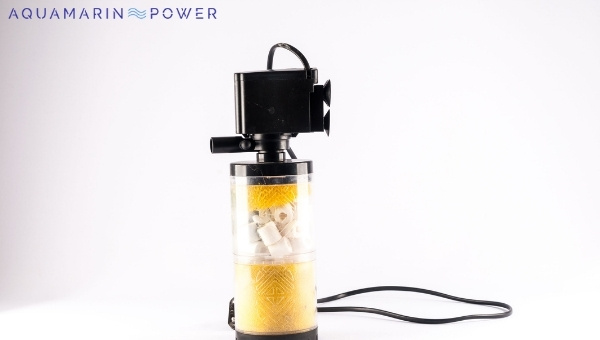
If you're not sure which filter to get, I recommend you some famous filter brands that are available in the market:
- Aqua clear: These filters are trendy and are known for their reliability.
- Fluval: These filters are also trendy and offer various options for different tank sizes.
- Marine land: These filters are great for larger tanks but can also be used in smaller tanks.
- Eheim: These filters are high quality and are a bit more expensive than the other brands, but they are definitely worth the investment.
- Aqua tech: These filters are suitable for both small and large tanks.
- Tetra: These filters are affordable and suitable for small tanks.
- Aqueon: These filters are also affordable and suitable for small tanks.
Heating
The ideal water temperature for Ember Tetras is 73° to 84°F. If the temperature is outside this range, you must use a heater to maintain it.
I recommend using a heater that has a built-in thermostat. This will help ensure that the water stays in the proper range.
There are many different types and brands of heaters on the market. I recommend you choose one of these heaters:
- Hydor: These heaters are very popular and are known for their reliability.
- Fluval: These heaters are also very popular and offer various options for different tank sizes.
- Marine land: These heaters are great for larger tanks, but they can also be used in smaller tanks.
- Eheim: These high-quality heaters are a bit more expensive than the other brands, but they are definitely worth the investment.
- Aqua tech: These heaters are suitable for both small and large tanks.
- Tetra: These heaters are affordable and suitable for small tanks.
- Aqueon: These heaters are affordable and suitable for small tanks.
Lighting
Ember Tetras do not need special lighting. A standard fluorescent aquarium light will be delicate.
If you want to keep live plants in your tank, I recommend using a light with a high PAR rating. This will ensure that the plants receive enough light to grow properly.
There are many different types of aquarium lights on the market. I recommend you choose a light:
- Aqua Culture: These lights are trendy and are known for their quality.
- Fluval: These lights are also trendy and offer various options for different tank sizes.
- Marineland: These lights are great for larger tanks but can also be used in smaller ones.
- Eheim: These lights are high quality and are more expensive than the other brands, but they are definitely worth the investment.
- Aqua tech: These lights are suitable for both small and large tanks.
- Aqueon: These lights are affordable and suitable for small tanks.
Co2 Systems
Ember Tetras do not require a CO2 system. However, if you want one, I recommend using a CO2 diffuser. This will help ensure that the CO2 is evenly distributed throughout the tank.
There are many different types of CO2 diffusers on the market. I recommend you choose a diffuser. Some diffusers are better than others, so it's essential to do your research before buying one.
Substrate
Ember Tetras are not fussy when it comes to a substrate. They will do fine in various substrates, including gravel, sand, and bare-bottom tanks.
If you decide to use a substrate, I recommend using a fine-grained substrate. This will help keep the water clean and clear.
Some suitable substrates to use are:
- Aquarium gravel: It is the most popular substrate and comes in various colors.
- Play sand: It is safe and can be found at most home improvement stores.
Decoration
Ember Tetras are not particularly fussy when it comes to decoration. They will do well in various tank setups, including planted and community tanks.
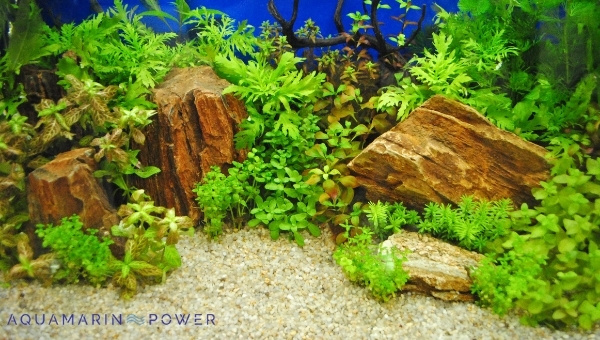
However, I do recommend adding some type of decoration to the tank. This will give your tetras somewhere to hide and feel secure.
Some good decorations to use are:
- Driftwood: This is a great way to add natural elements to the tank.
- Rocks: Rocks can help create hiding spots for your tetras and can also use to aquascape in the tank.
- Plants: Live plants are an excellent addition to any tank and can help shelter your fish.
Other Tank Accessories
Ember Tetras do not need any unique tank accessories. However, a few accessories can make your life easier, such as an automatic fish feeder and a water filter.
- Automatic fish feeder: This is a great way to make sure your fish are getting fed on a regular basis.
- Thermometer: A thermometer is a good way to check the temperature of the water.
- Fish Net: A fishnet is a handy tool for catching and removing your fish from the tank.
- Tank Vacuum: A tank vacuum can help you keep the substrate clean and debris-free.
- pH Meter: A pH meter is a good way to check the acidity of the water.
Cleaning The Tank
It's essential to clean your tank regularly. This will help keep the water clean and clear and help prevent algae growth.
There are many different ways to clean a tank. I recommend using a combination of methods to get the best results.
Some suitable methods to use are:
- Siphoning: This is the most common way to clean a tank. It's quick and easy, and it will remove all of the debris from the substrate.
- Scrubbing: Scrubbing the inside of the tank with a sponge or brush will help remove any algae or build-up from the glass.
- Vacuuming: Vacuuming the substrate with a shop vac will help remove debris or algae from the tank.
- Chemical treatment: If the tank is filthy, you may need a chemical cleaner to get it clean.
Cleaning The Filter
It's also essential to clean your filter regularly. This will help keep the water clean and clear and help prevent algae growth.
Cleaning your filter is a simple process. I recommend doing it every two weeks or so.
Remove it from the tank and rinse it with hot water to clean your filter. Then, put it back in the tank and turn it on.
Water Changes
Water changes are also important. I recommend doing a water change every week or two. This will help keep the water clean and clear.
To do a water change, simply remove some water from the tank using a siphon or bucket. Then, add fresh, clean water to the tank.
Ember Tetra: Common Possible Diseases
Ember Tetras are relatively hardy fish. However, they are still susceptible to a few diseases.
These are:
- Ich: Ich is a common disease that can affect all types of fish. It's caused by a parasite and can be treated with medication.
- Finrot: Finrot is a bacterial infection that affects the fins and tail of fish. It can be treated with antibiotics.
- Cloudy Eye: Cloudy eye is a condition that causes the eyes to become cloudy. It can be treated with medication.
If you think your fish may be sick, I recommend taking them to a pet store or veterinarian for treatment.
Tips For Keeping Your Tetras Healthy
There are a few things you can do to help keep your Ember Tetras healthy and happy:
- Provide a clean and stress-free environment: Keeping the tank clean and free of debris and providing plenty of hiding spots for your fish.
- Feed them a balanced diet: A good diet is essential for keeping your fish healthy. I recommend feeding them a mix of freeze-dried and live food.
- Keep the water temperature consistent: The ideal water temperature for Ember Tetras is 73°-84°F.
- Regular water changes: This will help keep the water clean and clear.
- Keep the filter clean: This will help keep the water clean and clear.
- Watch for signs of disease: If you notice any changes in your fish's behavior or appearance, consult a veterinarian.
Ember Tetra: Treatment And Medications Of Diseases
There are many different medications available for treating diseases in fish. I recommend consulting a veterinarian before using any medication.
Some common medications used to treat diseases including:
- Ich: Ich can be treated with a medication called formaldehyde.
- Finrot: Finrot can be treated with a medication called erythromycin.
- Cloudy Eye: Cloudy eyes can be treated with a medication called tetracycline.
If you notice any changes in your fish's behavior or appearance, I recommend quarantining them in a separate tank and treating them with medication.
Ember Tetra: Diet Recommendations
Ember Tetras are omnivores, which means they will eat both plant and animal matter. I recommend feeding them a mix of freeze-dried and live food.
Some good foods to feed your Ember Tetras include:
- Brine shrimp: These are small, shrimp-like creatures high in protein.
- Daphnia: These are tiny freshwater crustaceans that are high in protein.
- Bloodworms: These are small, red worms that are high in protein.
- Tubifex worms: These are small. Red worms are high in protein.
- Algae wafers: These are specially formulated pellets that contain all the nutrients your fish need.
I recommend feeding your fish 2 to 3 times per day. Only give them as much food as they can eat in 2 minutes.
Some vegetables that you can feed your Ember Tetras include:
- Zucchini
- Kale
- Romaine lettuce
- Peas
- Spinach
I recommend blanching these vegetables before feeding them to your fish. To blanch a vegetable, simply boil it for 1 minute and then cool it down with cold water.
You might also see them snacking on algae from time to time. This is perfectly normal and is good for them, as it provides them with essential nutrients.
Ember Tetra: Foods To Avoid
There are a few foods that you should avoid feeding your Ember Tetras:
- Raw meat: This can contain bacteria that can make your fish sick.
- Processed food: This includes things like chips and crackers. These foods are high in salt and fat, which can harm your fish.
- Caffeine: This can be harmful to your fish.
It's important to avoid feeding your fish any foods not meant for them. This can lead to health problems and can be very harmful to their development. Feeding them a healthy diet is essential for keeping them healthy and happy.
Ember Tetra: Tank Mates
Because of their gentle nature, Ember Tetras make a great addition to any community tank. They can be kept with a wide variety of other fish.
Some good tank mates include:
- Corydoras catfish: These are small, bottom-dwelling catfish that make a great addition to any community tank.
- Otocinclus catfish: These small, algae-eating catfish make a great addition to any community tank.
- Ghost shrimp: These are small, translucent shrimp that make a great addition to any community tank.
- Rasboras: These small, peaceful fish make a great addition to any community tank.
- Guppies: These small, brightly-colored fish make a great addition to any community tank.
- Neon Tetras: These neon tetras are small, brightly-colored fish that make a great addition to any community tank.
- Pygmy catfish: These small, bottom-dwelling catfish make a great addition to any community tank.
When choosing tank mates for your Ember Tetras, it's important to avoid aggressive or too-large fish.
Ember Tetra: Fish to Avoid
- Angelfish
- Barracuda
- Jack Dempsey
- Tiger barbs
- Swordtails
- Koi
When choosing tank mates for your Ember Tetras, it's essential to keep in mind the size and temperament of the other fish. Avoid fish that are aggressive or too large. Ember Tetras is a very peaceful fish and can be easily intimidated by larger, more aggressive fish.
The Importance Of The Shoal
We've talked about this before in our article on the importance of fish schools, but it's worth mentioning again. Ember Tetras are schooling fish, which means they feel more comfortable and secure when kept in a group.
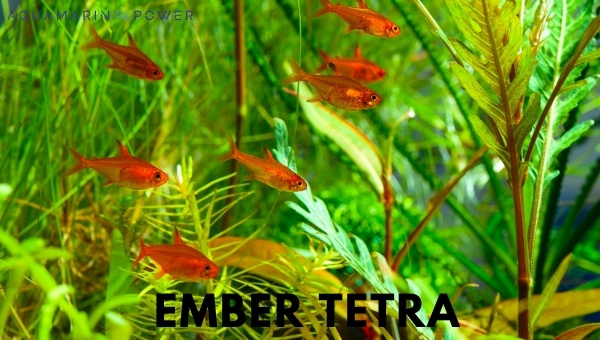
Ember Tetras live in large groups of up to 100 fish in the wild. They spend their days swimming and foraging together in the Araguaia River basin of Brazil.
Ember Tetras should be kept in groups of at least 6-8 fish in captivity. This will give them the social interaction they need to feel comfortable and secure. It will also make them more active and playful.
Ember Tetras can become territorial with other similar fish in size and appearance. So it's essential to keep them in a group to avoid conflicts.
Advantages Of Having Ember Tetra In Your Tank
- The first advantage of having them in your tank is that they are peaceful fish. They are not aggressive and will not bother other fish in the tank.
- The second advantage of having them in your tank is that they are effortless to care for. They are not picky eaters and do not require any special care.
- The third advantage of having them in your tank is that they are schooling fish. They feel more comfortable and secure when they are kept in a group.
- The fourth advantage of having them in your tank is that they are easy to breed. If the conditions are right, they will often lay their eggs in a community tank.
So, those are four reasons why you might want to consider adding Ember Tetras to your tank. They are peaceful, easy-to-care-for fish that will do well in most tanks. If you're looking for a schooling fish, they make a great addition to any community tank. And if you're interested in breeding fish, they are effortless to breed and often lay their eggs in a community tank.
Disadvantages Of Having Ember Tetra In Your Tank
- The first disadvantage of having them in your tank is that they can be territorial with other fish that are similar in size and appearance. So, it's essential to keep them in a group to avoid any conflicts.
- The second disadvantage of having them in your tank is that they require a higher temperature to breed. The ideal breeding temperature is 60-70 degrees Fahrenheit.
- The third disadvantage of having them in your tank is that they require good water quality. Ember Tetras are very sensitive to poor water conditions and can quickly become sick if the water quality is not maintained.
- The fourth disadvantage of having them in your tank is that they require a lot of hiding places for the fry. The fry is vulnerable and can quickly prey on other fish in the tank.
So, those are the four disadvantages of having Ember Tetras in your tank. While they are peaceful and easy to care for fish, they have some drawbacks that you should consider before adding them to your tank.
Conclusion
Ember Tetras are some of our favorite fish here at Complete Care Guides. They are peaceful and easy-to-care for fish that make a great addition to any community tank.
While they have disadvantages, such as being territorial with other fish and requiring good water quality, we think they are great for most people.
If you're looking for a schooling fish that is easy to care for, we would recommend adding Ember Tetras to your tank.
Thanks for reading!



